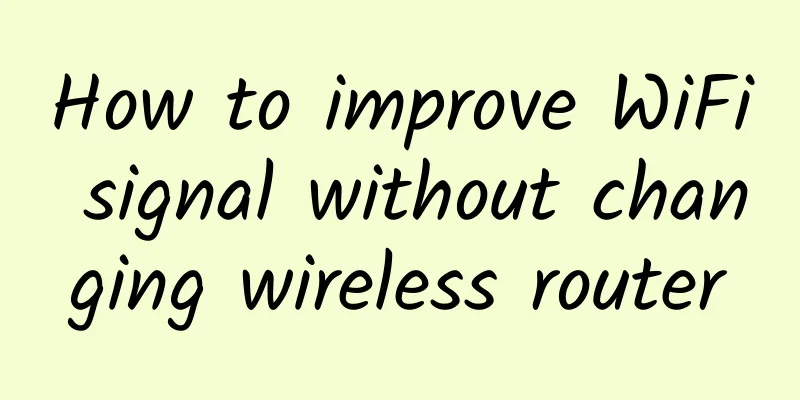Popularize knowledge! 20 key 5G technologies

|
5G network technology is mainly divided into three categories: core network, backhaul and fronthaul network, and wireless access network. Core Network The key technologies of the core network mainly include: network function virtualization (NFV), software-defined networking (SDN), network slicing and multi-access edge computing (MEC). 1 Network Function Virtualization (NFV) NFV is to use IT virtualization technology to softwareize network functions and run them on general-purpose hardware devices to replace traditional dedicated network hardware devices. NFV runs network functions in the form of virtual machines on general-purpose hardware devices or white boxes to achieve configuration flexibility, scalability and mobility, and in this way hopes to reduce network CAPEX and OPEX. The network devices to be virtualized by NFV mainly include: switches (such as Open vSwitch), routers, HLR (Home Location Register), SGSN, GGSN, CGSN, RNC (Radio Network Controller), SGW (Service Gateway), PGW (Packet Data Network Gateway), RGW (Access Gateway), BRAS (Broadband Remote Access Server), CGNAT (Carrier-grade Network Address Translator), DPI (Deep Packet Inspection), PE routers, MME (Mobile Management Entity), etc. NFV is independent of SDN and can be used alone or in combination with SDN. 2 Software Defined Networking (SDN) Software Defined Networking (SDN) is a network design that separates the network infrastructure layer (also known as the data plane) from the control layer (also known as the control plane). The network infrastructure layer and the control layer are connected through standard interfaces, such as OpenFLow (the open protocol for interconnecting data and control planes). SDN decouples the network control plane to general hardware devices and centrally controls network resources through software. The control layer is usually implemented by the SDN controller, and the infrastructure layer is usually considered to be a switch. SDN connects the SDN controller and the switch through a southbound API (such as OpenFLow), and connects the SDN controller and the application through a northbound API. SDN enables centralized management, improves design flexibility, and introduces open source tools. It has the advantages of reducing CAPEX and OPEX and stimulating innovation. 3 Network Slicing 5G networks will be used for different application scenarios, such as ultra-high-definition video, VR, large-scale Internet of Things, and Internet of Vehicles. Different scenarios have different requirements for network mobility, security, latency, reliability, and even billing methods. Therefore, a physical network needs to be divided into multiple virtual networks, each of which is used for different application scenario requirements. Virtual networks are logically independent and do not affect each other. Only after NFV/SDN is implemented can network slicing be realized. Different slices rely on NFV and SDN to create a shared physical/virtual resource pool. Network slicing also includes MEC resources and functions. 4 Multi-access Edge Computing (MEC) Multi-access edge computing (MEC) is a cloud-based IT computing and storage environment located at the edge of the network. It enables data storage and computing capabilities to be deployed closer to the user, thereby reducing network latency and providing better low-latency, high-bandwidth applications. MEC can introduce new applications through an open ecosystem, helping operators provide richer value-added services such as data analysis, positioning services, AR and data caching. Forward and Backhaul 5. Fronthaul and Backhaul Technologies Backhaul refers to the part where the wireless access network connects to the core network. Optical fiber is an ideal choice for backhaul networks. However, in environments where optical fiber is difficult to deploy or the deployment cost is too high, wireless backhaul is an alternative, such as point-to-point microwave and millimeter wave backhaul. In addition, wireless mesh network is also an option for 5G backhaul. In R16, 5G wireless itself will be designed as a wireless backhaul technology, namely IAB (5G NR integrated wireless access and backhaul). Fronthaul refers to the part where the BBU pool is connected to the remote RRU, as described in the C-RAN section. The capacity of the fronthaul link mainly depends on the wireless air interface rate and the number of MIMO antennas. The 4G fronthaul link uses the CPRI (Common Public Radio Interface) protocol, but due to the significant increase in 5G wireless rates and the exponential increase in the number of MIMO antennas, CPRI cannot meet the fronthaul capacity and latency requirements of the 5G era. For this reason, standard organizations are actively researching and developing new fronthaul technologies, including sinking some processing capabilities from the BBU to the RRU unit to reduce latency and fronthaul capacity. Wireless Access Network In order to increase capacity, spectrum efficiency, reduce latency, and improve energy efficiency to meet 5G key KPIs, the key technologies included in the 5G wireless access network include: C-RAN, SDR (software defined radio), CR (cognitive radio), Small Cells, self-organizing networks, D2D communications, Massive MIMO, millimeter wave, advanced modulation and access technology, in-band full-duplex, carrier aggregation, low latency and low power consumption technology, etc. 6 Cloud Radio Access Network (C-RAN) Cloud Radio Access Network (C-RAN) software virtualizes the network functions of wireless access and deploys them in a standard cloud environment. The C-RAN concept is developed from centralized RAN, with the goal of improving design flexibility and computing scalability, improving energy efficiency and reducing integration costs. Under the C-RAN architecture, the BBU function is virtualized and deployed in a centralized and pooled manner. The RRU and antenna are deployed in a distributed manner. The RRU is connected to the BBU pool through the fronthaul network. The BBU pool can share resources and flexibly allocate and process signals from each RRU. The advantage of C-RAN is that it can improve computing efficiency and energy efficiency, and facilitate the implementation of more advanced joint optimization solutions such as CoMP (coordinated multi-point transmission), multi-RAT, and dynamic cell configuration. However, the challenge of C-RAN is the complexity of fronthaul network design and deployment. 7 Software Defined Radio (SDR) Software Defined Radio (SDR) enables some or all of the physical layer functions to be defined in software. It is important to note the difference between software defined radio and software controlled radio, the latter of which only refers to the physical layer functions being controlled by software. Some traditional physical layer functions such as modulation, demodulation, filtering, channel gain and frequency selection can be implemented in SDR. These software calculations can be completed on general-purpose chips, GPUs, DSPs, FPGAs and other dedicated processing chips. 8 Cognitive Radio (CR) Cognitive radio (CR) makes real-time behavioral decisions by understanding the internal and external wireless environment. SDR is considered to be an enabling technology for CR, but CR includes and can enable a variety of technical applications, such as dynamic spectrum access, self-organizing networks, cognitive radio anti-interference systems, cognitive gateways, cognitive routing, real-time spectrum management, collaborative MIMO, etc. 9 Small Cells Small Cells are small base stations (small cells). Compared with traditional macro base stations, Small Cells have lower transmission power and smaller coverage, usually covering a range of 10 meters to several hundred meters. Usually, Small Cells are divided into micro cells, Pico cells and home Femto cells according to the size of their coverage. The mission of Small Cells is to continuously supplement the coverage blind spots and capacity of macro base stations and improve the quality of network services at a lower cost. Considering that 5G wireless frequency bands are getting higher and higher, 5G millimeter wave frequency bands will be deployed in the future. The higher the wireless signal frequency band, the smaller the coverage range. In addition, the user traffic demand in multiple scenarios in the future will continue to rise. In the post-5G era, a large number of Small Cells will be deployed. These Small Cells will form a super-dense hybrid heterogeneous (HetNet) network with macro base stations, which will bring extremely complex challenges to network management and frequency interference. 10 Self-Organizing Network (SON) A self-organizing network (SON) refers to a network that can automatically coordinate adjacent cells, automatically configure and self-optimize to reduce network interference and improve network operation efficiency. SON is not a new concept, it was proposed as early as the 3G era, but in the 5G era, SON will be a crucial technology. As mentioned above, the network densification in the 5G era poses a huge challenge to network interference and management, and SON is needed to minimize network interference and management. However, even SON may not be able to cope with the super-dense 5G network, so the CR (cognitive radio) technology mentioned above is needed to help. 11 Device-to-Device Communication (D2D) Device-to-device communication (D2D) refers to data transmission without passing through a base station, but allows a mobile terminal device to communicate directly with another mobile terminal device. D2D originated in the 4G era and is called LTE Proximity Services (ProSe) technology. It is a short-range communication technology based on the 3GPP communication system and mainly includes two functions: Direct discovery: The terminal can find nearby terminals that can be directly connected. ?Direct communication, direct communication, data interaction with surrounding terminals. In the 4G era, D2D communication was mainly used in the field of public safety. In the 5G era, due to the rise of a large number of IoT applications such as vehicle networking, autonomous driving, and wearable devices, the application scope of D2D communication will be greatly expanded, but it will face challenges in security and fairness of resource allocation. 13. Massive MIMO One of the main ways to increase wireless network speed is to use multi-antenna technology, that is, to use multiple antennas at the base station and terminal side to form a MIMO system. The MIMO system is described as M×N, where M is the number of transmitting antennas and N is the number of receiving antennas (for example, 4×2 MIMO). If the MIMO system is only used to increase the rate of one user, that is, multiple parallel data streams occupying the same time-frequency resources are sent to the same user, it is called single-user MIMO (SU-MIMO). If the MIMO system is used for multiple users, multiple terminals use the same time-frequency resources for transmission at the same time, it is called multi-user MIMO (MU-MIMO). MU-MIMO can greatly improve spectrum efficiency. Multiple antennas are also used in beamforming technology, which adjusts the amplitude and phase of each antenna to give the antenna radiation pattern a specific shape and direction, so that the wireless signal energy is concentrated on a narrower beam and the direction is controllable, thereby enhancing coverage and reducing interference. Massive MIMO uses a larger number of antennas. Currently, 5G mainly uses 64x64 MIMO. Massive MIMO can significantly improve wireless capacity and coverage, but faces challenges such as channel estimation accuracy (especially in high-speed mobile scenarios), multi-terminal synchronization, power consumption, and signal processing computational complexity. 14 Millimeter Wave (mmWave) Millimeter wave (mmWave) refers to radio waves with RF frequencies between 30GHz and 300GHz, and wavelengths ranging from 1mm to 10mm. One of the biggest differences between 5G and 2/3/4G is the introduction of millimeter wave. The disadvantages of millimeter wave are large propagation loss and weak penetration. The advantages of millimeter wave are large bandwidth, high rate, and small size of Massive MIMO antenna, so it is suitable for deployment in scenarios such as Small Cells, indoor, fixed wireless, and backhaul. 15 Waveform and Multiple Access Technology In the 4G era, OFDM technology was used. OFDM has the advantages of reducing inter-cell interference, resisting multipath interference, reducing the implementation complexity of transmitters and receivers, and being compatible with multi-antenna MIMO technology. However, in the 5G era, due to the definition of three major application scenarios, namely enhanced mobile broadband (eMBB), massive machine type communication (mMTC), and ultra-reliable low latency communication (uRLLC), these scenarios not only need to consider issues such as resisting multipath interference and compatibility with MIMO, but also put forward new requirements for spectrum efficiency, system throughput, latency, reliability, the number of terminals that can be accessed simultaneously, signaling overhead, and implementation complexity. To this end, 5G R15 uses CP-OFDM waveforms and can adapt to flexible and variable parameter sets to flexibly support different subcarrier spacings and multiplex 5G services of different levels and delays. For the 5G mMTC scenario, since orthogonal multiple access (OMA) may not meet the required connection density, the non-orthogonal multiple access (NOMA) solution has become the subject of extensive discussion. 16 In-band full-duplex (IBFD) In-band full-duplex (IBFD) may be one of the most promising technologies in the 5G era. Neither FDD nor TDD is full-duplex, because neither can transmit and receive signals simultaneously in the same frequency channel, while in-band full-duplex can transmit and receive simultaneously in the same frequency band, which can double the transmission rate compared to the half-duplex solution. However, in-band full-duplex will bring strong self-interference. The key to realizing this technology is to eliminate self-interference. But it is worth mentioning that self-interference elimination technology is constantly improving. Some research and experimental results have given the industry hope, but the biggest challenge is that the implementation complexity and cost are too high. 17 Carrier Aggregation and Dual Connectivity Technology Carrier aggregation (CA) increases bandwidth by combining multiple independent carrier channels to increase data rate and capacity. Carrier aggregation is divided into three combinations: intra-band continuous, intra-band non-continuous, and inter-band non-continuous, with increasing complexity. Carrier aggregation has been adopted in 4G LTE and will become one of the key technologies of 5G. The 5G physical layer can support aggregation of up to 16 carriers to achieve higher speed transmission. Dual connection (DC) means that the mobile phone can use the wireless resources of at least two different base stations (master and slave) at the same time when in a connected state. Dual connection introduces the concept of "split bearer", that is, data is split to two base stations at the PDCP layer. The PDCP layer of the user plane of the master station is responsible for PDU numbering, data splitting and aggregation between the master and slave stations, etc. Dual connectivity is different from carrier aggregation, mainly in that the layers where data diversion and aggregation are located are different. In the future, 4G and 5G will coexist for a long time. Different dual connection forms such as dual connection between 4G wireless access network and 5G NR (EN-DC), dual connection between 5G NR and 4G wireless access network (NE-DC), dual connection between 4G wireless access network and 5G NR under 5G core network (NGEN-DC), and dual connection between 5G NR and 5G NR will exist for a long time in the evolution of 5G networks. 18 Low Latency Technology In order to meet 5G URLLC scenarios, such as autonomous driving, remote control and other applications, low latency is one of the key technologies of 5G. In order to reduce the transmission latency of network data packets, 5G is mainly achieved from two aspects: wireless air interface and wired backhaul. On the wireless air interface side, 5G mainly reduces air interface latency by shortening TTI duration and enhancing scheduling algorithms; on wired backhaul, through MEC deployment, data and computing are brought closer to the user side, thereby reducing the physical latency caused by network backhaul. 19 Low Power Wide Area Network Technology (LPWA) mMTC is a major scenario of 5G. The goal of 5G is to connect everything. Considering the exponential growth in the number of IoT devices in the future, LPWA (low-power wide-area network) technology is crucial in the 5G era. Some LPWA (low-power wide-area) technologies are being widely deployed, such as LTE-M (also known as CAT-M1), NB-IoT (CAT-NB1), Lora, Sigfox, etc. Low power consumption, wide coverage, low cost and a large number of connections are the common characteristics of these technologies, but these technical characteristics are contradictory to each other: on the one hand, we extend battery life (usually several years to 10 years) by reducing power consumption, such as putting IoT terminals into sleep mode after sending data, or reducing coverage; on the other hand, we have to increase the transmission power per bit and reduce the data rate to enhance coverage. Therefore, weighing the pros and cons according to different application scenarios and finding the best balance among these contradictions is a long-term issue for LPWA technology. In the 4G era, two major cellular Internet of Things technologies, NB-IoT and LTE-M, have been defined. NB-IoT and LTE-M will continue to evolve from 4G R13 and R14 to 5G R15, R16, and R17. They belong to the future 5G mMTC scenarios and are important components of 5G Internet of Everything. 20 Satellite Communications Satellite communication access has been included in the 5G standard. Compared with 2/3/4G networks, 5G is a "network of networks". Satellite communications will be integrated into the 5G architecture to achieve a seamless interconnected network consisting of satellites, ground wireless and other telecommunications infrastructure. In the future, 5G traffic will flow dynamically in a seamlessly interconnected network based on bandwidth, latency, network environment and application requirements. |
<<: IDC Commentary: What are the remaining obstacles to China's 5G?
>>: On the eve of 5G, mobile phone companies should not panic
Recommend
The Ministry of Industry and Information Technology has indicated 10 important directions for 5G development in 2020!
On January 20, the State Council Information Offi...
5G technology has already approached the Shannon limit, what else can 6G do?
On May 17, China Unicom and ZTE Corporation signe...
Do you really understand the network process of IoT terminal devices connecting to the IoT platform?
Nowadays, we use a large number of IoT devices in...
Hizakura: €9.95/year-1GB/15G SSD/2TB/Netherlands data center
Hizakura is a Dutch merchant founded in 2021. The...
Unveiling the "veil" of smart courts, the old look is transformed by 5G applications
In a society ruled by law, it is normal to go to ...
Megalayer: 40% off on Hong Kong Alibaba/Huawei Cloud hybrid line servers, 50% off on high-defense servers, and 50% off on home broadband VPS
Megalayer has released its regular promotion for ...
How 5G's low latency will drive new applications and use cases
Why is low latency important for 5G? Latency is a...
Review: China ranks first in 5G mobile phone sales, is the world happy too?
After the Spring Festival of the Year of the Ox, ...
How to Make Ethernet Cable Longer
Looking to extend your existing Ethernet cable, o...
Internetport: €2/month KVM-512MB/10G SSD/5TB/Sweden VPS
Here is another VPS host in an unpopular area. In...
From theory to practice: the wide application of MUX VLAN in the network
Background of MUX VLAN MUX VLAN (Multiplex VLAN) ...
I finally figured out the service flow limit issue.
Introduction With the development of microservice...
Post-700MHz Era: New Game Plan for 5G Competition
[[383093]] After more than eight months of negoti...
VMISS 30% off for all items, Los Angeles CN2 GIA/AS9929/Hong Kong CN2/Korea CN2/Japan VPS monthly payment starts from 3.5 Canadian dollars
VMISS is offering 30% off on all VPS hosts this m...
Learn about three of the four types of switch messages in one minute: broadcast, multicast, and unknown unicast
With the development of the Internet, various app...




![[Black Friday] ProfitServer Singapore/Germany/Netherlands/Spain VPS 50% off, unlimited traffic KVM monthly payment starts from $2.88](/upload/images/67cac2275c1e5.webp)




